So this happened:
It took a couple of weeks of travel knitting, and my great frustration with its speed and ease of knitting was that the one time I decided to be sensible about the amount of yarn I packed, the sweater practically knit itself. Even with all the brioche. So I had to pack away the unfinished piece and think longingly of the two remaining skeins at home.
I had originally intended this yarn for a Slanting Gretel Tee, but felt an extreme reluctance to cast on. Perhaps that was knitters’ intuition warning me that the yarn and pattern were not well matched? That I was on the verge of generating clown vomit? Most variegated yarns look like gorgeous works of art in the skein, but like clown vomit knitted up.
And that’s because the beauty of the skein comes from horizontal lines of colour, like brush strokes mingling and interweaving:
Once knitted up, those painterly strokes become weird zig-zags, colours pool, and everything becomes messy.
They key to avoiding that is a stitch pattern which maintains those horizontal lines. Like garter:
Or, even better, linen stitch:
Now my yarn wasn’t as variegated as the one above (Punta Yarns Merisoft Handpainted Aran), but still behaved badly when knitted. Behold the pretty, pretty skein:
And the horrid, squiggly stockinette:
So I took the lazy way out: the easiest way to get horizontal lines of yarn is to umm, just flip everything over so that reverse stockinette is the right side.
To avoid pooling I alternated skeins, but switched to a single skein in the brioche section since there is enough going on within the stitch pattern to prevent colours from stacking up.
And finally, my thoughts on the pattern. I had loved and queued it ages ago, and thought a lot about what finding the perfect yarn. And then, a couple of weeks ago, realised I already had the yarn. No other projects had been knitted in variegated yarn, but surely colours in the same family would not disrupt those architectural brioche lines? (They don’t).
Like all Brooklyn Tweed patterns, this one had way more ease than I like. So I generated the sweater body with CustomFit, switching to Oshima instructions once the brioche started. The starting line of the brioche forms a strong horizontal component, and I tried to position it where I figured it would be more flattering – just a little above the underbust – by eliminating about an inch of straight knitting from the front and back yokes. The Oshima pattern also has an equal number of stitches front and back, which really doesn’t work for me. I ended up with more stitches on the front anyway, thanks to the CustomFit instructions, so decreased those stitches in the horizontal neck BO. I also added short row bust shaping (in addition to the regular increases and decreases generated in the CustomFit pattern) in the reverse stockinette section just below the yoke. I omitted the folded cuffs, using 1×1 twisted ribbing there and at the hem.
Then, the collar: Yes, it really does use four needle sizes! But it’s worth it, because compressing and expanding the knitting gives it that beautiful drape. My collar ended up shorter than the pattern, but I’m pretty happy with it. Knitting it to full length would have required another full skein.
Final thoughts: Love it! Love the trim shaping (the original is gorgeous but slouchy, and I really don’t do slouchy), the architectural lines of brioche shaping and the squishy collar. High necks aren’t usually recommended for busty people, but the deep curve of the collar’s edge functions visually like a scoop neck, so it remains flattering.
And yeah, the collar is stylable:
Details
Pattern: Oshima, body generated with CustomFit
Yarn: Malabrigo Rios; 100% superwash wool; 192m = 100g; 5 skeins; “Lotus”
Needles: 5.5mm straights for all reverse stockinette (worked lever style); 4.5mm for hems, cuffs, yoke brioche and 3rd section of cowl; 4.0mm for first section of cowl; 3.5mm for second section of cowl; 5.0mm for fourth section of cowl.
Ravelled: here

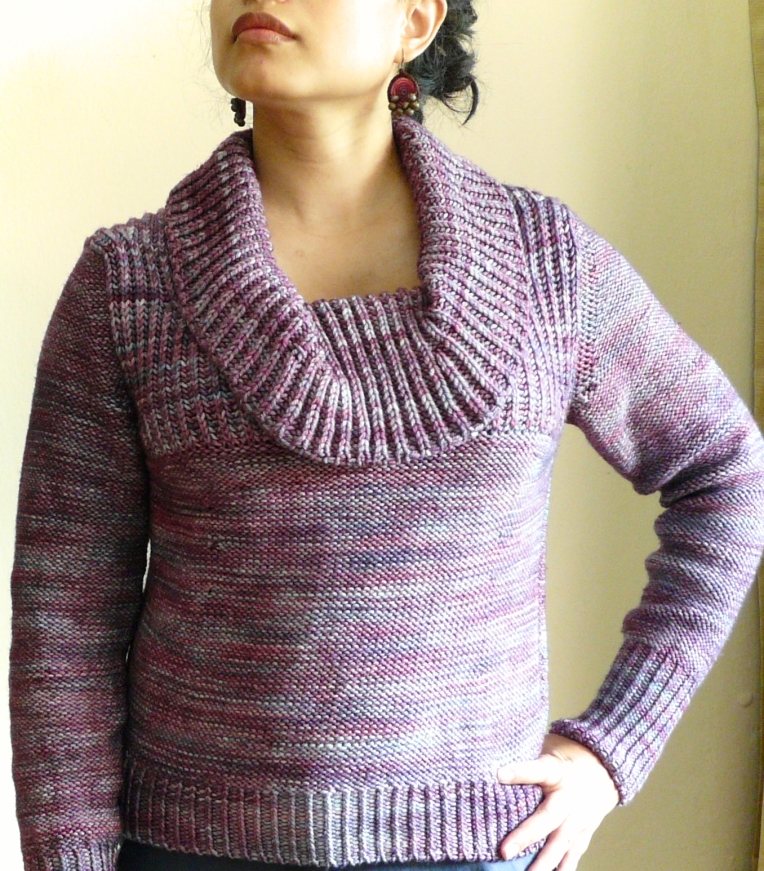
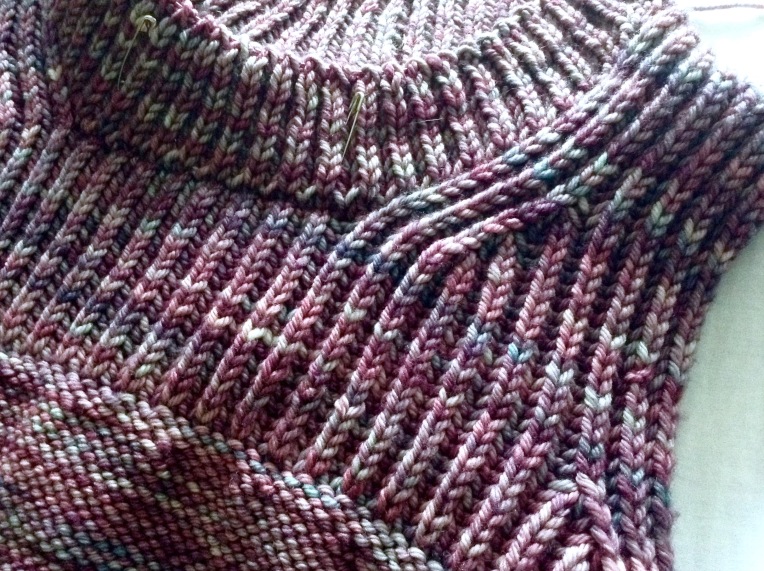
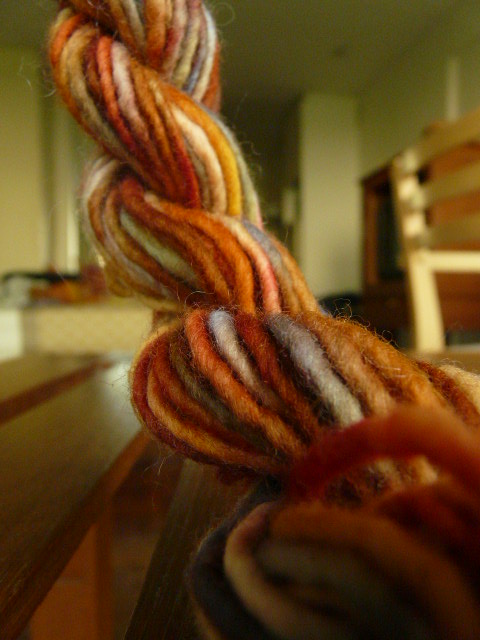
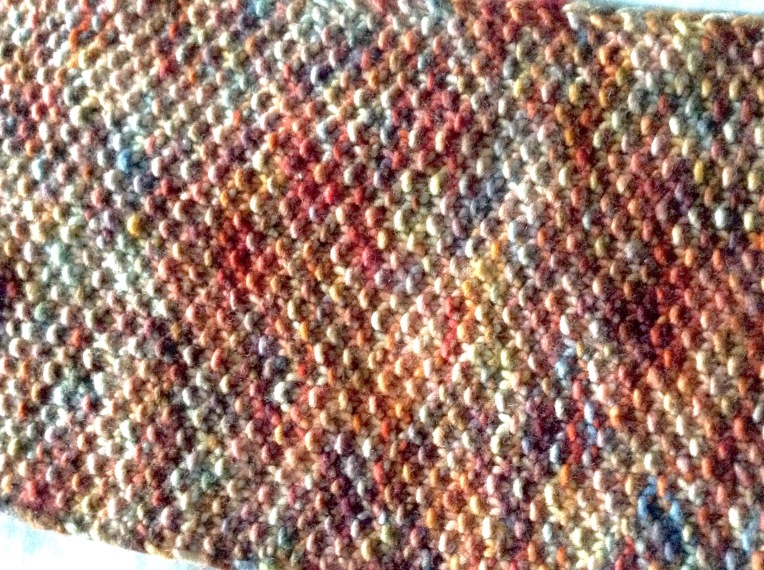
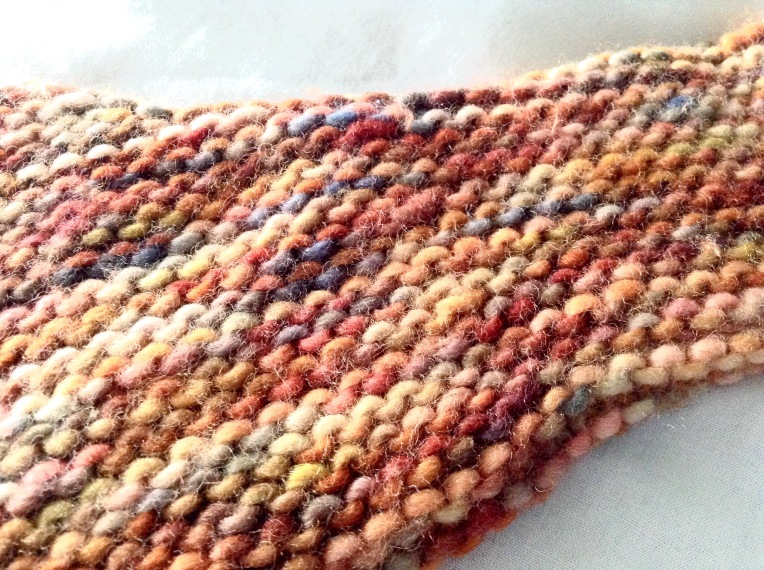
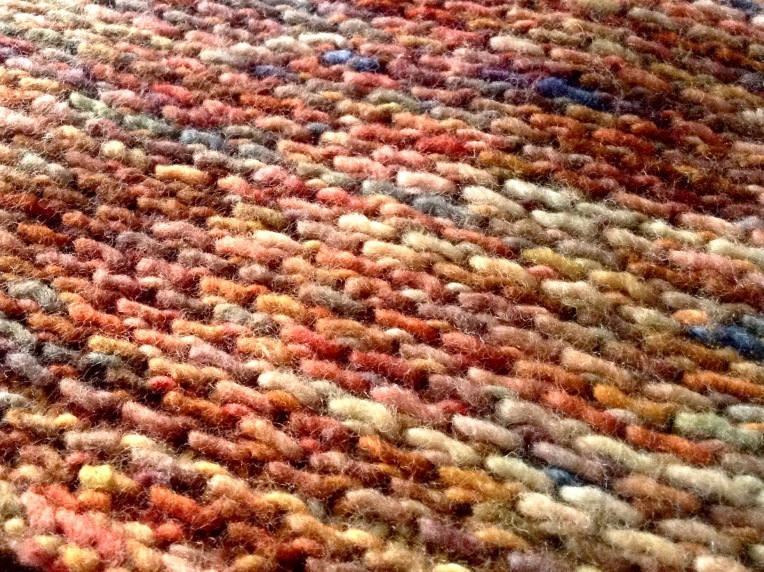
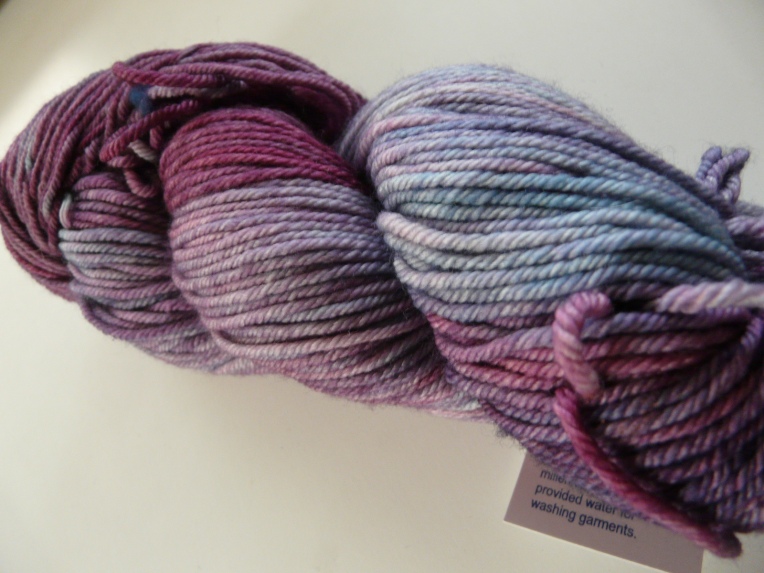
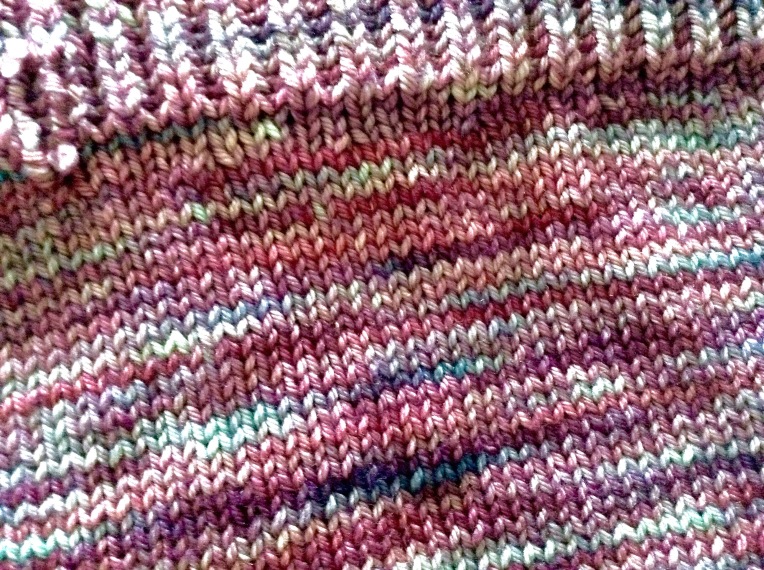


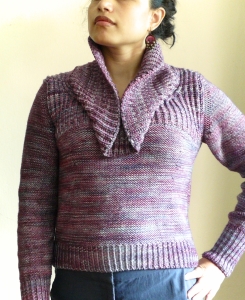
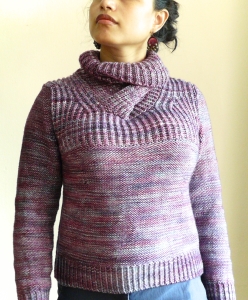

It looks really nice, I love it! 🙂
Thank you!
Stunning!!! Thanks so much for the wisdom of using variegated yarns and stitch patterns. I had never really thought of it that way.
Thanks! The trick to using variegated yarns is to keep the colours as blended as possible by using stitches which show long strands of colour, either vertical or horizontal.
Absolutely gorgeous! It fits you perfectly and I love the stitch definition! Great FO!
Thank you! That brioche really pops, doesn’t it?
Cool sweater. I really love the structure in that pattern…Well done and fabulous color!
Thank you!
Fabulous!
Thank you 🙂